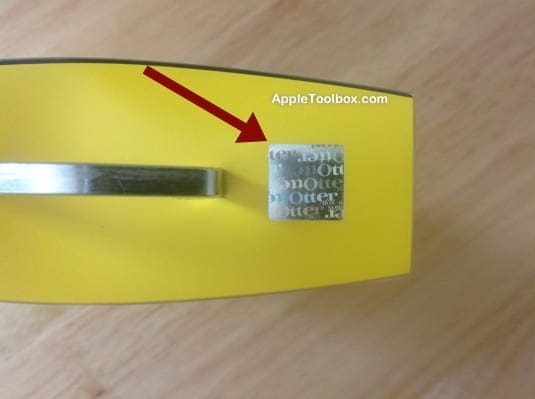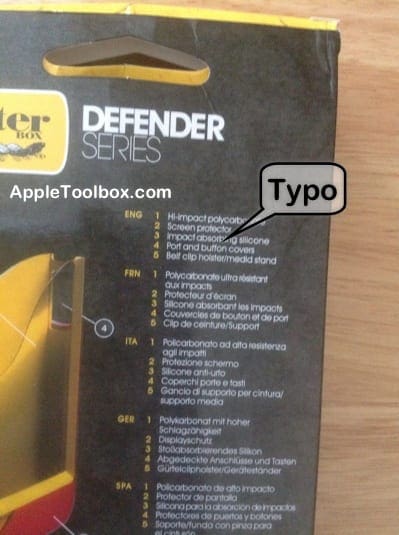So you love your iOS device and want to take care of your device properly. One of the first things that users usually do to accomplish this is buying a case to protect their iPad/iPhone or iPod. While there are very high quality cases for your device available, unfortunately there are also people that produce fake replicas of the well-known, desirable case brands. Counterfeiters cost both manufacturers and consumers major losses.
Since I love my OtterBox for my iPhone so much, I decided to buy the same case in different colors. So I ordered two more OtterBox cases on Amazon.com. I knew that there were many fake cases being sold on eBay and Amazon.com, so I was very careful. I made sure the seller had excellent reviews/ratings, and also that the price for the case was not ‘unbelievably’ cheap. I received my cases within a few days, and to my surprise they were counterfeit copies. Interestingly, my order was fulfilled by Amazon meaning that Amazon.com stores and ships these orders, not the seller. This, in a way, tells me that Amazon is directly selling counterfeit products.
How to avoid buying fake cases
1-Most case manufacturers sell their cases online from their own website. Buy directly from the manufacturer websites to avoid a knock off case. Most manufacturers also list their authorized reseller on their official website. Sometimes a reseller may offer better prices than the manufacturer.
2-If you do not want to buy directly from the manufacturer, then you may try credible retailers, like Best Buy or Wal-Mart. It is highly unlikely that these retailers will stock fake cases.
3-If you are buying from individual sellers on eBay or Amazon.com, do not trust sellers’ reviews or ratings. A seller may have excellent reviews and still sell counterfeit products. These knock off cases are of decent quality and it is very likely that buyers may not realize that their cases are fake and thus buyers may leave positive reviews.
4-If it is too cheap, do not buy it.
So how can you know if your case is a knockoff?
As I said above, the quality of fake cases are usually decent. This means that you may not even realize your case is a knockoff. In fact, I realized my OtterBox was a fake copy, mainly because I owned a genuine OtterBox which allowed me to compare. So how can you recognize a fake case?
Outside: Check the case’s box
1-Check the case box for a holographic sticker. These are 3D images with optical patterns that appear when held under certain light. Note that not every brand places a holographic sticker on their boxes. Not having a holographic sticker may not mean that the case is fake. But if you see it, it is a good sign.

2-Check the box carefully for typos. In my example, the fake iPhone case contained typos. It said on the box “buffon” instead of “button”. This is a clear indication of a fake case because no credible brand would make an error like this.

3-Check the box for overall quality. This includes inspecting the quality of the box and colors. In my example, colors on the fake case box were not vivid. It was like somebody photocopied it. Further, the case in the box was not packed properly; the case kept moving when you shake the box. Overall, the box was lacking quality.
Inside: Check the case itself
Check your case carefully. If there are signs for poor design and assembly, then it may be a fake. In my example, unlike the genuine one, the fake OtterBox case had rough edges, the rubber was flimsier, and there was also excess glue stuck all over the case.
If you are not sure, but you suspect that your case may be a fake copy, contact the case manufacturer via phone or email and consult with them.